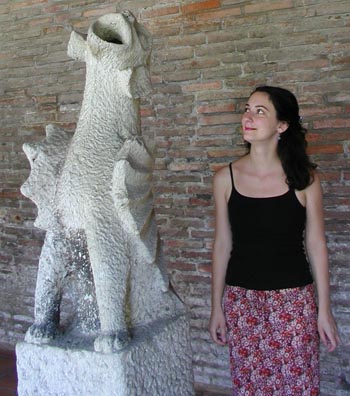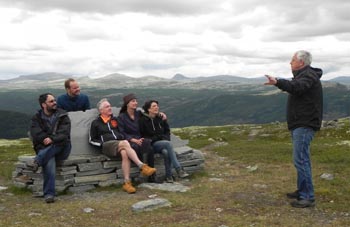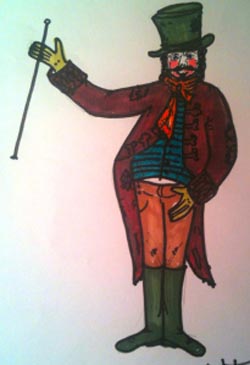Henrik Ibsen’s play Peer Gynt has been staged at theaters across the world since its premiere in 1876—as well as at an insane asylum in Iceland, in the Wild West, on a German boat, and in a Scottish pub.
Beginning March 1, the famed Norwegian play makes its debut at UC Santa Cruz, thanks to a team of collaborators crossing the boundaries of theater arts and digital arts and new media.
“Our production is born from deep engagement with Norway, the Peer Gynt legends, Ibsen, and Griegm,” noted UCSC Theater Arts professor Kimberly Jannarone, director of the production.
“We're collaborating with a dozen professional artists, including Nancy Carlin, the beloved Bay Area actress; Chris Molla, a soundscape artist who began his career with the band Camper van Beethoven; Kirsten Brandt, associate artistic director of San Jose Rep; Danny Scheie, who re-learned his ancestral language (Norwegian) for this role; and Paul Whitworth,” she added.
Drawing from Norwegian folklore, the play is based on two 17th- and 18th-century folk heroes known for both their wits and their physical prowess.
Deliberately ignoring the limitations that the conventional stagecraft of the time imposed on drama, Ibsen crafted Peer Gynt’s scenes to move openly through time and space and between consciousness and the unconscious--blending fantasy with unsentimental realism.
The plot revolves around a farm boy, Peer, who leaves his home to embark upon various fantastic adventures—full of trolls, asylum inmates, shipwrecks, and global capitalism--all of which symbolize mankind’s search for meaning and redemption.
The UCSC production is half traditional and half interactive, mirroring the flow of Peer's story.
The first act (in the UCSC Experimental Theater) presents the circumstances and relationships that cause Peer to flee his home in Norway. The second part (which takes place in the DARC building), invites the audience to travel alongside Peer and share his experience of wandering in a distinctly personal manner.
This means turning Acts IV and V—which Jannarone said most productions usually cut—into "simultaneous scenes" that function like a living gallery.
“We're keeping the sweep of Ibsen's epic by re-thinking the theatrical event: instead of sitting still and watching every stage of Peer's life, we're putting it in simultaneous-time display, where spectators can pick and choose which episodes they engage with,” noted Jannarone.
“Spectators can enter Peer's Office and engage in his mid-life crisis, in which he throws all of his money at the sexy Anitra,” Jannarone explained. “They can visit the ButtonMen Room, in which the custodians of the afterlife monitor all of Peer's adventures, and spectators can engage with sensor-activated displays. They can visit the asylum, where live musicians provide the sound track for the inmates.”
Or they can walk into a room with the ocean projected on its walls and watch live actors interact with filmed actors on a shipwreck and swim with a mysterious passenger, she added.
The production of Peer Gynt was woven into the curriculum of the UCSC Arts Division, which offered concept development seminars for designers, courses in musical adaptation, and a seminar on Ibsen.
Additional events include a conference on March 8 and 9 and titled “Peer Gynt in a Digital Age,” including a keynote address by Dr. Vigdis Ystad, Knight of Norway's Order of St. Olaf, for her work on Ibsen.
_________________________________________________________________________________________________
The UCSC Arts Division will present Henrik Ibsen's play "Peer Gynt" March 1-3 and 7-10, at the UCSC Experimental Theater (performance moves to Digital Arts Research Center midway through the play). Shows begin at 7 p.m. (Sunday matinees at 3 p.m.) Tickets are $15 general, $12 students, $12 seniors (62+), available at santacruztickets.com , the UCSC Ticket Office (831-459-2159), and the Santa Cruz Civic box office (831-420-5260). For more information go to the The Gynt Project web site.







